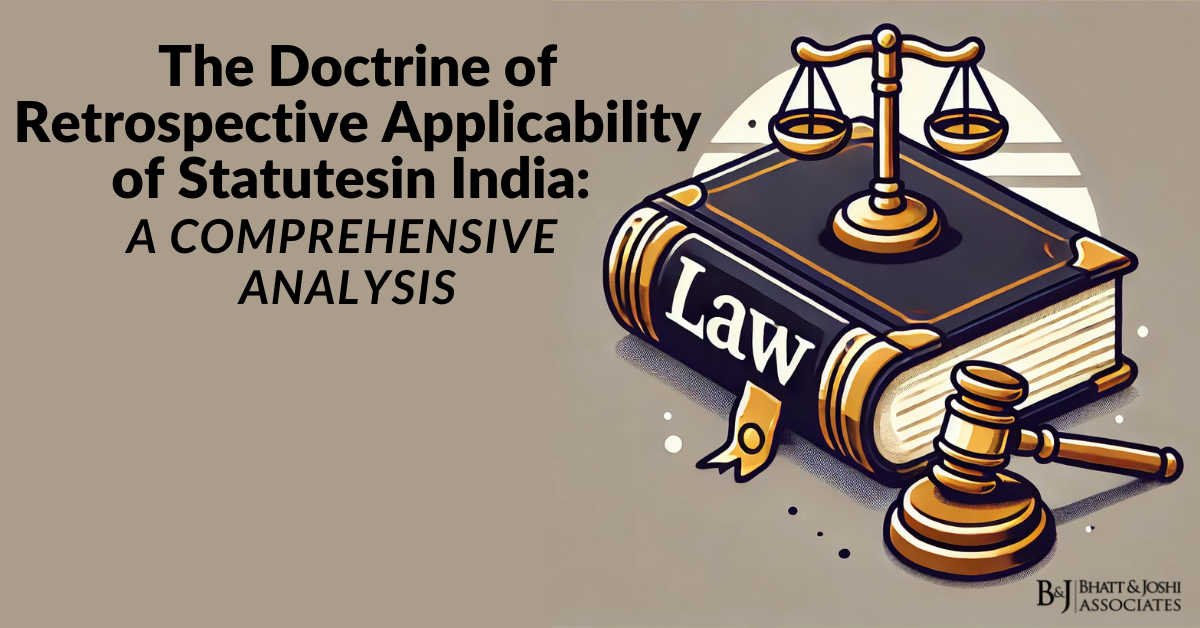Abstract
The Gujarat Stamp Act, 1958, constitutes a cornerstone of fiscal legislation governing property transactions within the state, establishing precise parameters for stamp duty liability through its definitions of ‘conveyance’ and ‘instrument’. This comprehensive analysis examines the statutory framework, judicial interpretations, and recent amendments that have shaped the understanding and application of these critical legal concepts. The interplay between the Gujarat Stamp Act, Registration Act, 1908, and Transfer of Property Act, 1882, creates a complex regulatory landscape that requires careful navigation by legal practitioners and property stakeholders. Recent judicial pronouncements have clarified the boundaries of stamp duty liability, particularly in cases involving rectification deeds, supplementary agreements, and corporate restructuring transactions.
Introduction
The imposition of stamp duty represents a fundamental aspect of property transfer taxation in Gujarat, governed by the Gujarat Stamp Act, 1958 (originally the Bombay Stamp Act, 1958). This legislation establishes a comprehensive framework for determining when documents become liable for stamp duty through its precise definitions of ‘conveyance’ and ‘instrument’. The significance of these definitions extends beyond mere fiscal considerations, affecting the validity, enforceability, and legal recognition of documents in property transactions.
The Gujarat Stamp Act operates within a broader statutory framework that includes the Registration Act, 1908, and the Transfer of Property Act, 1882, creating an integrated system for property transfer regulation. Understanding the nuanced differences between ‘conveyance’ and ‘instrument’ is crucial for legal practitioners, property developers, and individuals engaged in real estate transactions, as misclassification can result in significant financial penalties and legal complications.
Recent legislative amendments, including the Gujarat Stamp (Amendment) Act, 2025, have substantially modified the statutory landscape, introducing new categories of chargeable instruments and revised duty structures. These changes reflect the evolving nature of commercial transactions and the state’s efforts to enhance revenue collection while providing clarity to stakeholders.
Statutory Framework and Definitions under Gujarat Stamp Act
Definition of ‘Conveyance’ under Section 2(g)
Section 2(g) of the Gujarat Stamp Act provides an expansive definition of ‘conveyance’ that encompasses multiple categories of documents facilitating property transfer [1]. The statutory definition includes conveyance on sale, every instrument by which property (whether movable or immovable) is transferred inter vivos, and various court orders and decrees that effectuate property transfers.
The definition specifically includes decrees or final orders of civil courts, orders made by High Courts under Section 394 of the Companies Act, 1956 (now Section 230-234 of the Companies Act, 2013) regarding reconstruction or amalgamation of companies, and writings or letters of allotment given by cooperative societies to their members. This comprehensive approach ensures that property transfers, regardless of their form or the authority from which they emanate, are subject to appropriate stamp duty.
The recent Gujarat Stamp (Amendment) Act, 2025, has further expanded the definition to include orders by National Company Law Tribunals under Sections 230-234 of the Companies Act, 2013, orders by the Reserve Bank of India under Section 44A of the Banking Regulation Act, 1949, and significantly, any agreement for takeover of management or control of a company through share transfer or purchase [2]. This expansion reflects the modern commercial reality where corporate control changes often occur through sophisticated transaction structures.
Definition of ‘Instrument’ under Section 2(l)
The term ‘instrument’ under Section 2(l) of the Gujarat Stamp Act encompasses any document by which any right, liability is created, transferred, extended, extinguished, or recorded [3]. This broad definition captures documents that may not directly transfer property but create legal obligations or rights related to property or other matters.
The definition extends to electronic records in accordance with the Information Technology Act, 2000, acknowledging the digital transformation of document execution and storage. This inclusion ensures that electronic documents creating legal rights or obligations are subject to stamp duty requirements, preventing tax avoidance through technological means.
The distinction between ‘conveyance’ and ‘instrument’ is crucial for determining applicable stamp duty rates. While conveyances typically attract higher rates due to their property transfer nature, other instruments may attract different rates based on their specific classification under the Act’s Schedule.
Integration with Registration and Transfer of Property Acts
The Registration Act, 1908: Legal Validity Framework
The Registration Act, 1908, establishes mandatory registration requirements for certain categories of documents, including conveyances of immovable property [4]. Section 17 of the Registration Act specifies documents that must be registered to ensure their legal validity and enforceability in courts.
The interplay between stamp duty payment and registration requirements creates a dual compliance obligation. Documents subject to registration cannot be registered unless they bear appropriate stamp duty, as registration authorities are required to verify stamp duty compliance before accepting documents for registration. This creates an integrated system where fiscal compliance (stamp duty) and legal validity (registration) are interlinked.
The Registration Act’s requirement for proper stamp duty extends beyond mere revenue collection to ensure document authenticity and prevent disputes over inadequately stamped instruments. The Act empowers registration authorities to refuse registration of inadequately stamped documents, effectively creating an enforcement mechanism for stamp duty compliance.
Transfer of Property Act, 1882: Substantive Rights Framework
The Transfer of Property Act, 1882, provides the substantive legal framework for property transfers, defining the rights, obligations, and procedures governing property transactions [5]. Section 54 of the Act details requirements for valid transfer of tangible immovable property, including the necessity for proper documentation and registration.
The intersection of the Transfer of Property Act with the Gujarat Stamp Act occurs primarily in the definition and classification of property transfer documents. While the Transfer of Property Act establishes the substantive requirements for valid transfers, the Gujarat Stamp Act determines the fiscal obligations associated with such transfers.
Understanding this intersection is crucial for ensuring that property transfers comply with both substantive legal requirements and fiscal obligations. Failure to satisfy either set of requirements can result in invalid or unenforceable transfers, highlighting the importance of comprehensive legal compliance.
Landmark Judicial Interpretations
Vijaybhai Zinabhai Prajapati v. State of Gujarat: Rectification Deed Analysis
The Gujarat High Court’s decision in Vijaybhai Zinabhai Prajapati v. State of Gujarat represents a seminal judgment on the stamp duty liability of rectification deeds [6]. The case involved rectification deeds executed to correct mistakes in conveyance deeds, specifically relating to the substitution of individual partners’ names for a partnership firm name as purchasers.
The Court held that rectification deeds that merely correct clerical errors without altering property rights or creating new transfers do not constitute ‘conveyances’ under Section 2(g) of the Gujarat Stamp Act. The Court emphasized that since no property was actually transferred to different persons and no new rights were created, the rectification deed did not attract stamp duty as a conveyance.
This decision established the principle that the substance of the transaction, rather than its form, determines stamp duty liability. Where rectification serves only to clarify or correct existing arrangements without creating new legal rights or transferring property to different beneficiaries, such documents escape the higher stamp duty rates applicable to conveyances.
Supreme Court Precedent: Prasad Technology Park Pvt. Ltd. v. Sub Registrar
The Supreme Court’s decision in Prasad Technology Park Pvt. Ltd. v. Sub Registrar established crucial principles regarding supplementary agreements and their stamp duty implications [7]. The Court held that supplementary agreements that do not create new rights, transfer property, or alter the fundamental nature of existing arrangements should not attract stamp duty as independent chargeable instruments.
The Court distinguished between instruments that create substantive new obligations and those that merely clarify or supplement existing arrangements. This distinction has significant implications for commercial transactions where parties often execute supplementary documents to address changing circumstances or clarify ambiguities in original agreements.
The precedent established by this case has been consistently applied by courts across India, including the Gujarat High Court in the Vijaybhai Zinabhai Prajapati case, demonstrating the hierarchical influence of Supreme Court jurisprudence on stamp duty matters.
Corporate Restructuring and Stamp Duty: Evolving Jurisprudence
Recent judicial developments have addressed the complex stamp duty implications of corporate restructuring transactions. The Mumbai High Court’s decision in Chief Controlling Revenue Authority v. Reliance Industries Limited clarified that court orders sanctioning schemes of amalgamation constitute ‘instruments’ subject to stamp duty [8].
The Court held that the taxable event under stamp duty legislation is the execution of the instrument, not the underlying transaction. This principle ensures that corporate restructuring transactions, despite their complexity, remain subject to appropriate fiscal obligations based on the documents that effectuate the restructuring.
The Gujarat Stamp (Amendment) Act, 2025, has specifically addressed these concerns by including orders of National Company Law Tribunals and other authorities within the definition of ‘conveyance’, ensuring comprehensive coverage of corporate restructuring transactions.
Practical Applications and Compliance Considerations
Rectification Deeds and Clerical Corrections
The practical application of judicial precedents regarding rectification deeds requires careful analysis of the specific circumstances surrounding each correction. Legal practitioners must distinguish between corrections that constitute new transfers and those that merely clarify existing arrangements.
Factors relevant to this determination include whether the correction changes the identity of the beneficial owners, alters the extent of property rights, or creates new legal obligations. Where corrections involve substitution of legal entities (such as partnership firms) with their constituent members, courts have generally held that no new transfer occurs if the beneficial ownership remains unchanged.
The stamp duty implications of rectification deeds must be evaluated on a case-by-case basis, considering the specific factual matrix and the nature of the correction being made. This requires detailed legal analysis to ensure proper classification and compliance with fiscal obligations.
Electronic Documents and Digital Compliance
The inclusion of electronic records within the definition of ‘instrument’ reflects the modern reality of digital document execution and storage. Legal practitioners must ensure that electronic documents comply with both the Information Technology Act, 2000, and stamp duty requirements under the Gujarat Stamp Act.
Electronic stamp duty payment mechanisms have been implemented to facilitate compliance with digital document execution. These systems provide secure, verifiable methods for stamp duty payment that integrate with electronic document management systems.
The challenge for practitioners lies in ensuring that electronic documents are properly classified and that appropriate electronic stamp duty is applied. This requires understanding both the technical requirements for electronic document validity and the fiscal obligations under stamp duty legislation.
Recent Legislative Amendments and Their Impact
Gujarat Stamp (Amendment) Act, 2025: Comprehensive Reform
The Gujarat Stamp (Amendment) Act, 2025, represents the most significant reform of the state’s stamp duty legislation since its original enactment [9]. The amendments address several key areas including expanded definitions, revised duty structures, enhanced compliance mechanisms, and streamlined administrative procedures.
Key changes include the expansion of the ‘conveyance’ definition to include corporate control transactions, increased maximum stamp duty limits (from Rs. 25 crores to Rs. 50 crores for conveyances), and new compliance obligations for financial institutions. These changes reflect the evolving nature of commercial transactions and the state’s commitment to comprehensive tax reform.
The amendments also introduce standardized timelines for adjudication (60 days for instruments executed within Gujarat, 3 months for instruments executed outside Gujarat) and enhanced enforcement powers for collecting authorities. These procedural improvements aim to reduce uncertainty and expedite stamp duty assessment processes.
Impact on Corporate Transactions
The inclusion of management control agreements within the definition of ‘conveyance’ has significant implications for corporate transactions. Share purchase agreements that result in change of control now attract stamp duty under Article 20(d) of Schedule I, potentially increasing transaction costs substantially.
This change affects private equity transactions, strategic acquisitions, and other control transactions where stamp duty costs may influence deal structures and pricing. Legal practitioners must now consider stamp duty implications as a material factor in transaction planning and structuring.
The amendment also introduces specific provisions for determining market value of unlisted shares, providing certainty in valuation methodologies while ensuring appropriate revenue collection. These provisions include opportunity for companies to be heard before valuation determination, addressing due process concerns.
Enhanced Compliance and Enforcement
The amendments introduce new compliance obligations for financial institutions, requiring them to ensure stamp duty payment on instruments creating rights in their favor [10]. This provision addresses previous gaps where inadequately stamped instruments were accepted by financial institutions without proper duty verification.
Section 30-A of the amended Act specifically places responsibility on financial institutions for stamp duty compliance on instruments creating security interests. This represents a significant shift toward institutional accountability in stamp duty compliance, potentially affecting lending practices and documentation requirements.
The enhanced enforcement provisions allow collecting authorities to initiate proceedings based on copies of instruments, addressing practical challenges in duty collection. This pragmatic approach enables authorities to pursue recovery even when original documents are not readily available.
Comparative Analysis with Other States
Inter-State Variations in Stamp Duty Treatment
The treatment of ‘conveyance’ and ‘instrument’ varies significantly across Indian states, reflecting local legislative preferences and revenue requirements. While the basic framework derives from the Indian Stamp Act, 1899, state-specific amendments have created divergent approaches to classification and duty calculation.
Maharashtra, for instance, has specific provisions for corporate amalgamations under its stamp legislation, while Karnataka has developed detailed rules for electronic document stamping. These variations create compliance challenges for multi-state transactions and require careful jurisdiction-specific legal analysis.
Gujarat’s recent amendments position the state as having one of the most comprehensive stamp duty frameworks in India, particularly regarding corporate transactions and digital document compliance. This may influence other states to adopt similar reforms, potentially leading to greater uniformity in stamp duty treatment.
Best Practices for Multi-Jurisdictional Compliance
Transactions involving multiple states require careful consideration of each jurisdiction’s stamp duty requirements. Legal practitioners must analyze the applicable law based on factors including place of execution, location of property, and residence of parties.
The principle established in various High Court decisions that stamp duty liability depends on the place of document execution rather than the location of underlying assets has important implications for transaction structuring. This requires strategic consideration of execution logistics to optimize stamp duty exposure.
Multi-jurisdictional transactions also raise questions about credit for stamp duty paid in other states. While some provisions exist for duty credit, these are limited and require specific compliance with statutory requirements.
Procedural Aspects and Administrative Practice
Adjudication Procedures and Timelines
The adjudication process under the Gujarat Stamp Act provides a mechanism for determining appropriate stamp duty where uncertainty exists about classification or valuation. The recent amendments establish clear timelines for adjudication, reducing uncertainty and potential delays in transaction completion.
The Collector’s powers under Section 31 include authority to determine market value, classify instruments, and assess appropriate duty. The standardized adjudication fee of Rs. 1,000 provides cost certainty for parties seeking official determination of stamp duty liability.
Appeals against adjudication orders are available through prescribed channels, ensuring due process protection for parties. The appellate framework provides institutional safeguards against arbitrary or incorrect duty assessment, balancing revenue collection with taxpayer rights.
Penalty and Enforcement Mechanisms
The amended Act introduces a structured penalty framework replacing the previous discretionary system. Penalties for insufficient stamping are now calculated as multiples of the duty shortage, providing predictability in penalty assessment.
Enhanced enforcement powers allow authorities to proceed based on copies of instruments where originals are unavailable, addressing practical challenges in duty collection. This represents a pragmatic approach to enforcement while maintaining substantive fairness in duty assessment.
The penalty framework includes provisions for voluntary compliance and rectification, encouraging proactive duty payment while maintaining deterrent effect for non-compliance. This balanced approach seeks to maximize voluntary compliance while ensuring effective enforcement.
Future Trends and Emerging Issues
Technology Integration and Digital Transformation
The integration of digital technologies in stamp duty administration continues to evolve, with initiatives including electronic stamping, digital document verification, and automated duty calculation systems. These technological advances promise to streamline compliance while reducing opportunities for duty evasion.
Blockchain technology and smart contracts present emerging challenges for stamp duty classification and collection. Legal frameworks must evolve to address these technologies while ensuring comprehensive coverage of chargeable transactions.
Artificial intelligence applications in document analysis and duty assessment may transform administrative practices, enabling more efficient processing and reducing manual intervention in routine compliance activities.
Harmonization and Standardization Efforts
Ongoing efforts toward harmonization of stamp duty laws across Indian states may result in greater uniformity in classification and treatment of various instruments. The Goods and Services Tax experience demonstrates the potential for coordinated tax reform across jurisdictions.
The proposed integration of stamp duty with other registration and compliance requirements may create unified transaction processing systems, reducing compliance burden while enhancing revenue collection efficiency.
International best practices in property transfer taxation continue to influence Indian stamp duty reform, with potential adoption of concepts such as value-based duty calculation and simplified compliance mechanisms.
Conclusion
The Gujarat Stamp Act’s definitions of ‘conveyance’ and ‘instrument’ form the foundation of the state’s property transfer taxation system, creating precise parameters for stamp duty liability while providing flexibility to address evolving commercial practices. The recent amendments demonstrate the legislature’s commitment to comprehensive reform that balances revenue enhancement with taxpayer certainty and administrative efficiency.
Judicial interpretations have refined the application of these definitions, establishing principles that emphasize substance over form in determining stamp duty liability. The decisions in cases such as Vijaybhai Zinabhai Prajapati v. State of Gujarat and the Supreme Court’s guidance in Prasad Technology Park provide valuable precedents for practitioners navigating complex stamp duty issues.
The integration of the Gujarat Stamp Act with the Registration Act, 1908, and Transfer of Property Act, 1882, creates a comprehensive framework for property transaction regulation that extends beyond mere revenue collection to encompass document validity and enforceability. This integrated approach ensures that fiscal compliance supports broader legal and commercial objectives.
Recent legislative amendments reflect the dynamic nature of commercial transactions and the need for responsive legal frameworks. The expansion of definitions to include corporate control transactions and enhanced compliance mechanisms for financial institutions demonstrate the legislature’s awareness of evolving business practices and the need for comprehensive regulation.
Looking forward, the continued evolution of technology, commercial practices, and inter-state coordination will likely influence further developments in stamp duty law. Legal practitioners and commercial stakeholders must remain vigilant to these developments while ensuring comprehensive compliance with existing requirements.
The Gujarat Stamp Act’s framework provides a robust foundation for property transfer taxation that balances revenue collection with commercial practicality. Understanding the nuanced definitions of ‘conveyance’ and ‘instrument’ remains essential for effective legal practice and commercial success in Gujarat’s dynamic property market.
The complexity of modern commercial transactions requires sophisticated legal analysis to ensure proper classification and compliance. The principles established through judicial interpretation and legislative amendment provide valuable guidance for navigating this complexity while achieving commercial objectives within appropriate legal and fiscal parameters.
References
[1] Gujarat Stamp Act, 1958, Section 2(g). Available at: https://vlex.in/vid/gujarat-stamp-act-1958-545552902
[2] Gujarat Stamp (Amendment) Act, 2025. Available at: https://www.scconline.com/blog/post/2025/04/16/gujarat-stamp-amendment-act-2025-impact-property-transactionns/
[3] Gujarat Stamp Act, 1958, Section 2(l). Available at: https://indiankanoon.org/doc/147681899/
[4] Registration Act, 1908, Section 17. Available at: https://www.indiacode.nic.in/bitstream/123456789/15937/1/the_registration_act,1908.pdf
[5] Transfer of Property Act, 1882, Section 54. Available at: https://blog.ipleaders.in/indian-stamp-and-registration-act/
[6] Vijaybhai Zinabhai Prajapati v. State of Gujarat, 2018. Available at: https://indiankanoon.org/doc/28035624/
[7] Prasad Technology Park Pvt. Ltd. v. Sub Registrar, (2006) 1 SCC 473. Available at: https://www.casemine.com/search/in/stamp%20duty%20on%20supplementary%20lease%20deed
[8] Chief Controlling Revenue Authority v. Reliance Industries Limited, 2016. Available at: https://indiankanoon.org/doc/31807137/
[9] Gujarat Stamp (Amendment) Act, 2025 Analysis. Available at: https://www.lexology.com/library/detail.aspx?g=3d424a5c-ac93-4a91-9963-8eccddb41502
[10] Enhanced Compliance Provisions. Available at: https://mahendrabhavsar.com/gujarat-stamp-amendment-bill-2025/
[11] Stamp Duty on Corporate Arrangements. Available at: https://www.corporateprofessionals.com/articles/implication-of-stamp-duty-on-scheme-of-arrangement/
[12] Gujarat Stamp Duty Rates and Registration. Available at: https://www.sobha.com/blog/stamp-duty-registration-charges-in-gujarat/
[13] Rectification Deed Procedures. Available at: https://www.99acres.com/articles/rectification-deed-everything-you-need-to-know.html
[14] M&A Stamp Duty Implications. Available at: https://www.majmudarindia.com/gujarat-high-court-rules-on-stamp-duty-levy-in-ma-transactions/
[15] Indian Stamp Act Overview. Available at: https://www.indiacode.nic.in/bitstream/123456789/20095/1/the_indian_stamp_act,_1899.pdf
Download Full Judgments (PDF)
- https://bhattandjoshiassociates.s3.ap-south-1.amazonaws.com/judgements/acts_23041984.pdf
- https://bhattandjoshiassociates.s3.ap-south-1.amazonaws.com/judgements/Bill10of2025GJ.pdf
- https://bhattandjoshiassociates.s3.ap-south-1.amazonaws.com/judgements/the_registration_act,1908.pdf
- https://bhattandjoshiassociates.s3.ap-south-1.amazonaws.com/judgements/A1882-04.pdf
- https://bhattandjoshiassociates.s3.ap-south-1.amazonaws.com/judgements/Vijaybhai_Zinabhai_Prajapati_vs_State_Of_Gujarat_on_10_August_2018.PDF
- https://bhattandjoshiassociates.s3.ap-south-1.amazonaws.com/judgements/The_Chief_Controlling_Revenue_vs_M_S_Reliance_Industries_Limited_on_31_March_2016.PDF














